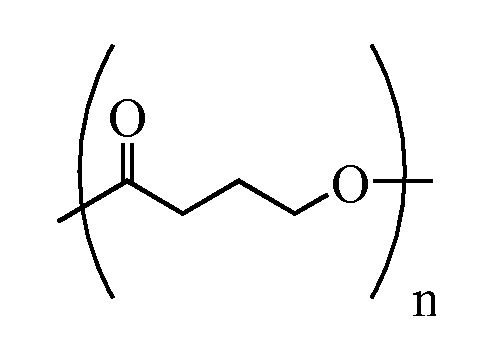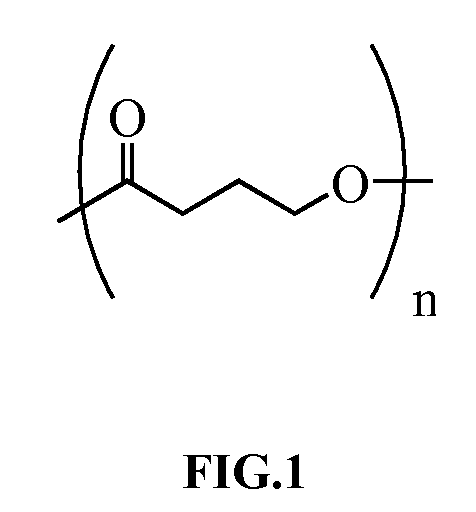Thermoformed poly-4-hydroxybutyrate medical implants
a technology of polyhydroxybutyrate and medical implants, which is applied in the field of thermoforming poly4hydroxybutyrate, can solve the problems of not every polymer is suitable for thermoforming, and many thousands of finished parts per pi
- Summary
- Abstract
- Description
- Claims
- Application Information
AI Technical Summary
Benefits of technology
Problems solved by technology
Method used
Image
Examples
example 1
Thermoforming of P4HB Homopolymer
[0071]A sheet of poly-4-hydroxybutyrate with a thickness of 2.25 mm was secured in a frame. The frame including the P4HB sheet was placed into a circulating air oven, and the P4HB sheet was heated at 75° C. for 6 minutes. The softened P4HB sheet secured in the frame was then placed over an ASTM D-638 Type V tensile bar dog bone mold, and drawn down using a 200 Pa vacuum pump. The vacuum was applied for 4 seconds, and the thermoformed sheet of P4HB allowed to cool and solidify. Once the thermoformed sheet had cooled and solidified, the thermoform was removed from the frame, and the edges were trimmed. The thickness of the thermoformed P4HB was 1.56 mm. The tensile properties of the thermoformed P4HB are shown in Table 1.
TABLE 1Tensile properties of P4HB thermoform prepared in Example 1TensileElongationWidthThicknessBreak LoadStrengthat BreakModulusmmmmNMPa%MPa3.081.56193.040.2946.273.8
example 2
Thermoforming Lamination of a P4HB Monofilament Mesh
[0072]Composite structures including a poly-4-hydroxybutyrate monofilament warp knit mesh (pore size 0.258 mm2) laminated to a poly-4-hydroxybutyrate film were prepared using an American Plastics Machinery thermoforming machine, model number CRF / Recip equipped with a 6⅜″×8⅜″ vacuum box with the settings shown in Table 2. In each case, P4HB mesh (Mw 356 kDa) was placed inside the vacuum box on a perforated tray / board, and the vacuum box raised into place such that the heated film was forced into the mesh by the vacuum. The unoriented film (Mw 414 kDa) had a thickness of 35 μm, and was heated to a temperature of 100±5° C.
[0073]The adhesion between the film and the mesh was very strong such that it was not possible to peel the film from the mesh without damaging the mesh and tearing the film. There was no apparent change in the weight average molecular weight of the film or mesh during the lamination process.
TABLE 2Conditions for lami...
example 3
Determination of Vicat Softening Point of P4HB
[0076]The Vicat softening point of a sample of poly-4-hydroxybutyrate was determined according to test method ASTM D1525-09 and found to be 51.9° C.
PUM
| Property | Measurement | Unit |
|---|---|---|
| glass transition temperature | aaaaa | aaaaa |
| glass transition temperature | aaaaa | aaaaa |
| melting point | aaaaa | aaaaa |
Abstract
Description
Claims
Application Information
 Login to View More
Login to View More - R&D
- Intellectual Property
- Life Sciences
- Materials
- Tech Scout
- Unparalleled Data Quality
- Higher Quality Content
- 60% Fewer Hallucinations
Browse by: Latest US Patents, China's latest patents, Technical Efficacy Thesaurus, Application Domain, Technology Topic, Popular Technical Reports.
© 2025 PatSnap. All rights reserved.Legal|Privacy policy|Modern Slavery Act Transparency Statement|Sitemap|About US| Contact US: help@patsnap.com


